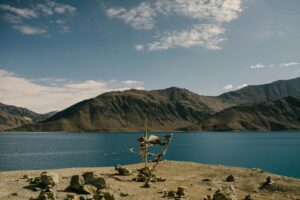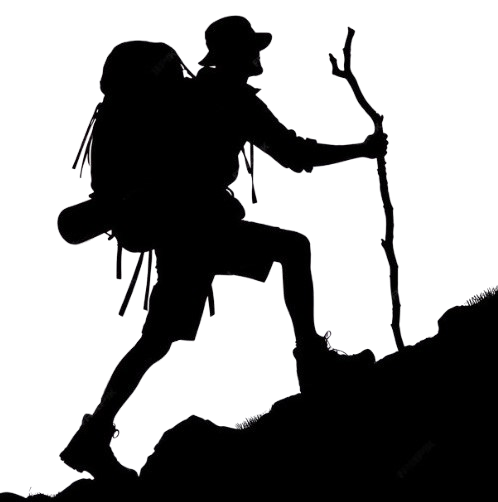Introduction: There are places you visit, and then there are places that stay with you forever. Ladakh belongs to the latter. Known as the “Land of High Passes,” Ladakh is a mystical region nestled between the Kunlun Mountains and the mighty Himalayas. It’s a place where time seems to slow down, where every turn brings a new postcard-worthy view, and where the spirit of the mountains awakens something deep inside you.
I had long dreamt of visiting this magical land. When I finally did, Ladakh exceeded every expectation — not just with its natural beauty, but with its warmth, silence, spiritual depth, and a culture that embraces both simplicity and strength. Here’s a detailed account of my journey.
Day 1: Touching the Sky – Arrival in Leh (Altitude: 11,500 ft)
My flight from Delhi to Leh felt like entering a dreamscape. As we descended, I saw barren brown mountains dusted with snow, winding rivers, and a town cradled in a vast valley. The moment I stepped off the plane, the sharp chill and thin air reminded me I had arrived somewhere extraordinary.
Leh’s altitude demands respect. I spent the entire day acclimatizing, as advised. My hotel, a traditional Ladakhi home-stay, offered views of distant monasteries and rugged mountain lines. I drank lots of water, sipped butter tea (an acquired taste!), and watched the evening sun cast golden hues over the town. It was serene, surreal, and the perfect beginning.
Day 2: Discovering Leh – Spiritual Sites and Local Life
With a full day to explore Leh, I began early, heading to Shanti Stupa, a gleaming white dome built by Japanese Buddhists. Perched on a hilltop, it offered panoramic views of Leh city below and the distant Himalayas. The crisp morning air, gentle prayer chants, and fluttering prayer flags made it a meditative experience.
Next, I walked through the narrow streets of Old Leh to the Leh Palace, a 17th-century structure that resembles Lhasa’s Potala Palace. Though weathered, it held a quiet dignity. The top floors gave an unmatched view of the Indus Valley.
Post-lunch, I strolled through the Leh Market — a vibrant blend of Tibetan and Ladakhi culture. I shopped for handmade pashmina shawls, prayer wheels, and apricot jam. A plate of steaming thukpa (Ladakhi noodle soup) and fried momos at a local café completed the day.
Day 3: The Marvels of Nature – Magnetic Hill, Gurudwara Pathar Sahib, and Sangam
We hit the road along the Leh-Kargil highway, arguably one of the most scenic drives I’ve ever experienced.
Magnetic Hill was the first stop. It’s a spot where the laws of gravity seem suspended. I parked the car in neutral and, to my disbelief, it began moving uphill! Locals say it’s an optical illusion — but it still felt like magic.
Nearby, we visited Gurudwara Pathar Sahib, a peaceful Sikh shrine maintained by the Indian Army. The kindness of the soldiers, hot langar (meal), and the spiritual aura of the place touched me deeply.
The final stop was Sangam, the confluence of the emerald-green Indus River and the muddy Zanskar River. Watching two rivers merge so distinctly was breathtaking. I sat there for a while, just taking it all in, with the mountains standing tall and silent around me.
Day 4: The Road to Nubra Valley – Through Khardung La (18,380 ft)
We left early for Nubra Valley, crossing Khardung La, one of the highest motorable passes in the world. The journey was not easy — steep curves, thin air, and snow made it a thrilling adventure. But the views at the top — prayer flags flapping, bikers celebrating, and panoramic vistas — made it unforgettable.
Descending into Nubra, the landscape changed dramatically. Suddenly, we were in a desert at high altitude — sand dunes, poplar trees, and distant snowy peaks. Hunder, where we stayed, is a tiny village straight out of a fairytale.
In the evening, I took a double-humped camel ride in the dunes. These Bactrian camels, once part of the Silk Route caravans, added a slice of history to the experience. Sunset painted the valley in hues of amber and violet — it was pure magic.
 Day 5: The Jewel of Ladakh – Pangong Lake
Day 5: The Jewel of Ladakh – Pangong Lake
If Ladakh had a crown jewel, it would be Pangong Tso.
The drive from Nubra to Pangong via Shyok Valley was rugged but stunning. River crossings, barren stretches, and dramatic cliffs made the journey feel like a film set.
And then, suddenly, there it was — Pangong Lake, stretching endlessly into the horizon, shimmering like sapphire. The lake, at 14,270 ft, is 60% in China and 40% in India. It changes color with the sun — from deep blue to teal to golden pink at dusk.
I camped by the lake that night. It was cold — painfully so — but the sight of millions of stars and the milky way overhead warmed my heart. There’s no Wi-Fi here, no phone signal — just you and the cosmos.
Day 6: Returning to Leh – The Monastery Trail
On the way back to Leh, we visited Hemis Monastery, the largest in Ladakh. Home to ancient murals, golden statues, and the annual Hemis festival, the monastery exudes spiritual energy.
Next was Thiksey Monastery, often called “Mini Potala.” Perched dramatically on a hill, it houses a magnificent 49-ft statue of Maitreya Buddha. The monks welcomed us, offered tea, and even let us attend a prayer session. The chanting echoed through the halls — it was deeply moving.
Conclusion: A Journey Beyond Words
Ladakh isn’t just a place — it’s a feeling. A blend of raw nature, rich culture, and quiet spirituality. I came back physically tired but emotionally rejuvenated. The people of Ladakh — resilient, humble, and kind — taught me lessons in simplicity and gratitude.
This trip changed something in me. It reminded me of the vastness of the world, the strength of silence, and the beauty of being present. If you ever get the chance, don’t hesitate — go to Ladakh. Let the mountains speak to you.

